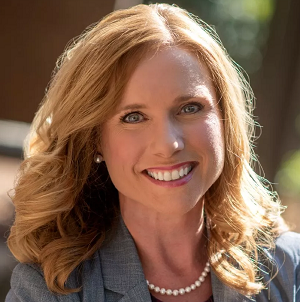Online banking has skyrocketed in popularity, but brick-and-mortar still plays a pivotal role in service strategies. In today’s marketplace, the right location is no longer based solely on foot traffic and neighborhood demographics — it’s a complex mix of market potential, member behavior, and the competitive landscape.
With the right data, credit union leaders can make smarter decisions about where to expand and how to reach their intended audience. But which data points are the most important for scoping out new locations?
Target Market Saturation

Sonja Delaney is the chief strategy officer at Directions Credit Union ($1.3B, Toledo, OH). She has more than 30 years of experience in the accounting and finance industry and was previously the CEO of Midwest Community Federal Credit Union.
What data points are most important for evaluating the success or a branch or the need for new branch location? How have these metrics evolved in recent years?
Sonja Delaney: We look at the concentration of deposits among other financial institutions in the market — for example, how many competitors there are and the deposit base available to be shared among them. We look at whether we have capped our market penetration with existing branches and whether the market can support another branch with an additional potential deposit base. We also look at whether the population is growing or shrinking and whether the market segments align with our existing target market focus demographics.
As member preferences and behaviors shift, how are you leveraging branch analytics to adapt your brick-and-mortar strategy?
SD: We are definitely relying more on branch analytics to determine the best markets for a branch and the best locations inside those markets. We are also using analytics to help us determine the best use of the space within the branch depending on market segments. Branches are still required to forge a relationship and presence within communities, but we have to be cognizant of the changing role of the branch in forming those strong, lasting member relationships.
Population, Proximity, And Product Usage

Dianna Hunter is the chief operations officer at CEFCU ($7.8B, Peoria, IL). She joined the team in 1998 as a member service representative and held various roles in her 26 years with the institution before becoming COO in November 2023.
What data points are most important for evaluating the success or a branch or the need for new branch location? How have these metrics evolved in recent years?
Dianna Hunter: I, our member center vice presidents, and our facilities vice president consider many factors before presenting a new location for consideration. Those include membership numbers in the market and proximity to existing CEFCU infrastructure such as branches and ATMs in the shared branch network. Other data points we review include population trends, traffic counts, and large area employers.
When considering the success of new member centers, we look at the growth of the initial book of business — member and business member savings, total member and business member loans, mortgages, credit cards — in relation to projections. We also look at new members and see how the team is doing in increasing product and service usage. Are more members signed up to access their accounts via CEFCU online and mobile banking? Did they receive a debit card? If so, are they using it?
These metrics have evolved over time. It’s so much easier now to access data both internally and externally to make these decisions. Chambers of commerce or economic development councils have websites that provide detailed community data. Our internal data sources have proven extremely valuable for looking at detailed member or demographic information.
As member preferences and behaviors shift, how are you leveraging branch analytics to adapt your brick-and-mortar strategy?
DH: We measure how members use CEFCU. We have some members that continue to visit the member center as their primary method of conducting business with us. At the same time, some members have moved from using the member center exclusively to being multi-channel or even preferring to conduct business online. We know it’s important to invest in all channels to provide the options members want and create the best member experience possible.
Need A Better Branch Strategy? Now’s the time to identify important trends in your local market, evaluate potential new markets, and uncover hidden gems in vacated branches using the latest data from the NCUA, FFIEC, U.S Census, and more. Peer Suite from Callahan & Associates helps you do all this and more. Craft a branching strategy that stands out from the rest — learn how today.
No One-Size-Fits-All Post-COVID

Jessica Baker is the chief strategy officer at Spero Financial Federal Credit Union ($710.5M, Greenville, SC). Starting as a branch manager at Spero 16 years ago, she now oversees a variety of activities for her organization, including strategic execution.
What data points are most important for evaluating the success or a branch or the need for new branch location? How have these metrics evolved in recent years?
Jessica Baker: First, we analyze the market, taking into account business and residential growth in the area. We also segment members, focusing on where our target members live and commute, which is a strategy we developed years ago. Additionally, we assess our existing member presence in the region and evaluate the level of competition, determining whether the market is saturated or in need of more financial institutions. Lastly, we use the number of households per branch as a valuable measure to guide our decision-making.
As member preferences and behaviors shift, how are you leveraging branch analytics to adapt your brick-and-mortar strategy?
JB: There is no one-size-fits-all approach to branch strategy. Depending on the market size, penetration, and proximity to other locations, we might opt for a full-size branch, a leased space, or an ITM to serve members. As banking behaviors have shifted — especially since COVID pushed more people toward technology — we’ve adapted to meet those needs. However, we’ve found our members still value a personal connection with the credit union. Whether through digital channels, ITMs with live-person support, or member service advisors, all of our channels are designed to foster that connection.
Interviews have been edited and condensed.